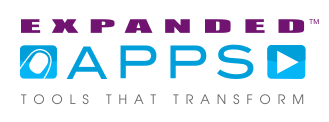Recounted by Skye Van Raalte-Herzog, CEO
We started developing iOS apps back in 2008 a few months after Apple’s SDK was released to developers. I made a split second decision to start developing mobile apps after I held an iPhone in my hand and realized it was a portable computer. I had absolute certainty that everyone would own a smartphone and it was just a question of how long it would take. How did I know? Because in the early ‘90s, I was pitching mobile phones to Wall Street analysts and business reporters in New York, as the Director of Corporate Communications and Investor Relations for Millicom, a company that was granted one of the first experimental cellular telephone licenses in the US in 1979. They went on to build the first cellular systems in the UK, Sweden, Pakistan, Hong Kong, Ghana, Costa Rica, Guatemala, and many other countries around the world. When cell phones were still the size of briefcases and cost thousands of dollars, I was telling skeptics that everyone would soon carry a smartphone in their pocket. No one believed me at the time and I used to say, “Just wait ’til 1997.” It took a few more years than that, and by 2000, I realized cell phones reached the ubiquity I’d spoken of nearly a decade earlier. But they weren’t smart until the iPhone came along. I knew the iPhone was the next wave in mobile and everyone would eventually own a smartphone. It was déjà vu. I’d seen the first mobile revolution unfold and the second was just beginning. I wanted to be part of that revolution.
I already was running a successful video production business, Expanded Books, and had great relationships with all the major publishing houses in the US. My plan was to adapt book content for mobile by creating interactive, immersive experiences on the iOS platform. I was the first app developer to meet with every major publisher in New York, back in September 2008. At that time, the publishers knew that the transition to digital would be disruptive and they were cautious but open to exploring new ways to enhance book content. I worked with Perseus Books/Running Press to create the first interactive book app released in the App Store: Cathy’s Book, which included video, animation, sound effects, links to the web, and illustrations. Expanded Apps also released the first cookbook app, The Private Chef–the first adapted from an actual cookbook–not a compilation of recipes from a database.
Before co-founding Expanded Books, I’d spent nearly a decade creating rich user experiences as a multimedia producer at Warner Bros. My focus had been on creating book and video-based content that supported large-scale, worldwide brands, such as Harry Potter, Friends, The Matrix, The West Wing, The Last Samurai, Scooby-Doo, The Looney Tunes and many, many more. Managing multi-faceted large-scale projects and rollouts dovetailed well with the skills needed to manage large software projects. Our early mobile projects at Expanded Apps centered mainly on book enhancements and adaptations, but as time went on, it became apparent for many reasons (mainly rights issues), that most books did not lend themselves well to the app format.
Working closely with our publishing clients, we identified some content that did work well in the mobile format, especially test prep material that could be enhanced with interactivity. Expanded Apps forged a long-term partnership with McGraw-Hill Education, and we began adapting not only their business and consumer titles but also more than 60 medical test preparation applications. These apps were mainly based on the well-known, worldwide brand, Case Files, that have been instrumental study aids for medical students for decades.
Our software development work with McGraw-Hill has expanded to developing and supporting many applications in the healthcare space for federal government agencies and commercial healthcare enterprises. Our portfolio includes apps for patient and physician education, medical student education, clinical decision support tools for physicians and care coordination/communication for all stakeholders involved in managing a patient’s care. Some of our healthcare apps utilize Fast Healthcare Interoperability Resources (FHIR), the latest standard for exchanging healthcare information electronically.
We also have branched out into other areas and today, we develop apps and backend systems for a variety of industries including education, transportation, finance, health and fitness, and entertainment as well as local, state, and federal government agencies.

